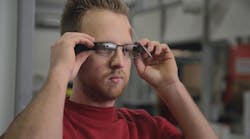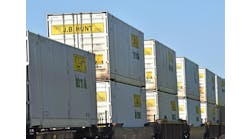“Vision picking” will become a reality in two U.S. warehouses later this year.
Exel, the North American arm of Deutsche Post DHL Group's supply-chain management business, will be testing the method of replacing handheld scanners and paper job orders with wearable "smart-glass" devices outfitted with warehouse management software, as reported by Robbie Whelan on Dow Jones Business News this week.
The technology enables workers to find the fastest route to pick products. It can also read bar codes.
"Vision picking enables hands free order picking and greatly increases productivity, " said Jan-Willem De Jong, business unit director technology, DHL Supply Chain, Benelux, earlier this year when reporting on a pilot program.
In January the company completed a pilot project testing smart glasses and augmented reality in a warehouse in the Netherlands. In cooperation with DHL customer Ricoh and wearable computing solutions expert Ubimax, the technology was used to implement 'vision picking' in warehousing operations.
Staff was guided through the warehouse by graphics displayed on the smart glass to speed up the picking process and reduce errors.
For three weeks, warehouse staff in Bergen op Zoom was equipped with head mounted displays such as Google Glass and VuzixM100. The displays showed the respective task information during the picking process, including aisle, product location and quantity. Overall, 10 order pickers used the equipment and picked more than 20,000 items, fulfilling 9,000 orders within the given time frame. As a result, staff was able to operate much faster and error free. Currently DHL and Ricoh are jointly evaluating the roll-out of the solution.
The pilot proved that augmented reality offers added value to logistics and resulted in a 25% efficiency increase during the picking process.
In June 2014, DHL's Trend Research team issued a trend report called "Augmented Reality in Logistics", which describes best practices and promising use cases. In addition to vision picking in warehousing operations, the report also illustrates how operations during transportation, last mile delivery and value-added services could be improved by augmented reality applications.



